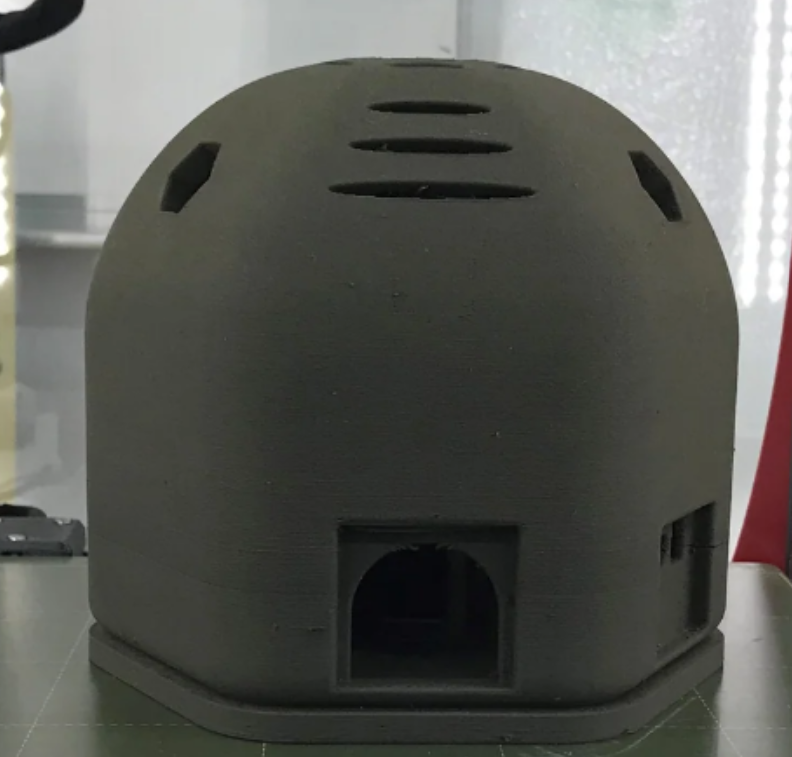Join the Expert Committee for the 2024 3D Printing Industry Awards to help select the winners!
Slant Concepts spinoff Slant 3D has updated its 3D Printing API, with new filament options offering improved user experience and operational efficiency.
The update adds new filament options, such as Matte Black PLA, Red and Yellow Regular PLA, and Lunar Simulant. Driven by user requests, these additions are now available on Slant 3D’s Etsy platform, fulfilling the demand for Matte Black PLA. Additionally, Basalt Moon Dust Filamet by The Virtual Foundry is also offered by the company. Costing around $1 per gram, this filament uses a basalt simulant similar to that used by NASA for rover testing, enabling users to try moon dust-like material without buying an entire spool.

Slant 3D’s 3D Printing API
Founded in 2017, Slant 3D is dedicated to making high-volume 3D printing a scalable alternative to traditional manufacturing. With a focus on large-scale 3D printing farms, the company develops hardware, software, and techniques to enable 3D printing devices to produce parts in any quantity.
By leveraging Slant 3D’s API, users can access all available print farms through the API. Upon receiving an order, the system identifies the nearest print farm to initiate the job, thereby optimizing delivery times. Additionally, True Digital Warehousing permits users to upload their inventory, facilitating on-demand part manufacturing and improving supply chain reliability while minimizing inventory requirements.
Slant 3D offers API access without upfront fees, charging users only when a part is ordered. Moreover, the API supports e-commerce print-on-demand, allowing users to design and test physical products without the need for inventory purchases. This capability streamlines product development and mitigates risk.
Parts are delivered within 2 to 5 days, reflecting Slant 3D’s emphasis on timely manufacturing. The API enables users to monetize their 3D model collections by providing a printing service for customers who lack 3D printers, thus broadening the accessibility and application of their designs.
Expanding on API upgrades
Application Programming Interface (API) enhancements for 3D printing improve integration with design software, enable real-time monitoring and control, and support advanced data analysis. They also facilitate better material management, cloud integration, and user interface customization, while enhancing security and enabling automation and AI tools.
One example includes Dyndrite launching software APIs within its Accelerated Computation Engine (ACE) Toolpathing API, aimed at simplifying advanced 3D printing features like support-free printing.
Developed with its OEM customers and the Dyndrite Developer Council (DDC), these APIs offer toolsets for raster and vector processes, including RGBA and distance field control, anisotropic compensation, and support-free metal printing. Targeted at smaller manufacturers with limited resources, the APIs make advanced AM features more accessible and cost-effective, democratizing 3D printing software development.
Going back to 2015, 3D design marketplace CGTrader introduced a novel API to enhance its platform. This API simplifies the process for businesses and designers to upload and distribute 3D models with a one-click import feature. According to co-founder Dalia Lasaite, the API will expand CGTrader’s content library, create new business opportunities, and improve workflows for 3D industry professionals. It aims to facilitate the creation of online 3D stores and manage model listings more efficiently.
What printing trends do the industry leaders anticipate this year?
What does the Future of 3D printing hold for the next 10 years?
To stay up to date with the latest 3D printing news, don’t forget to subscribe to the 3D Printing Industry newsletter or follow us on Twitter, or like our page on Facebook.
While you’re here, why not subscribe to our Youtube channel? Featuring discussion, debriefs, video shorts, and webinar replays.
Featured image shows 3D printed part using Moon Rocks. Photo via Slant 3D.



